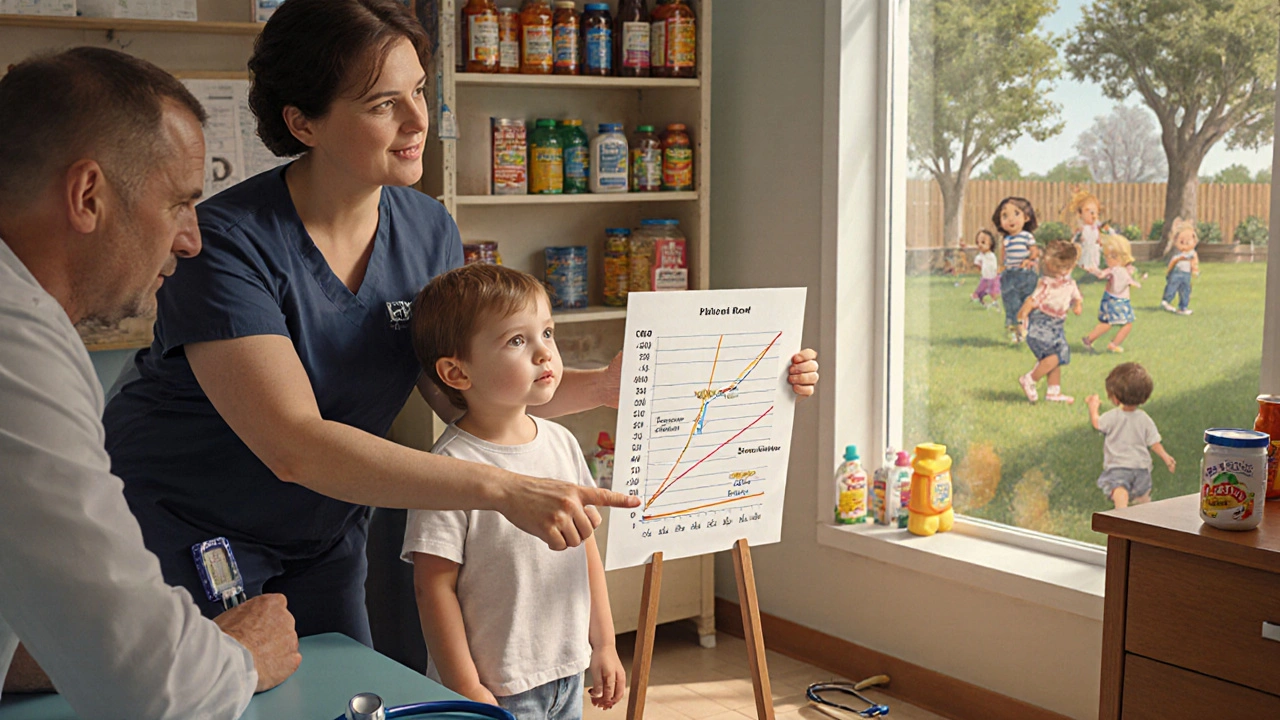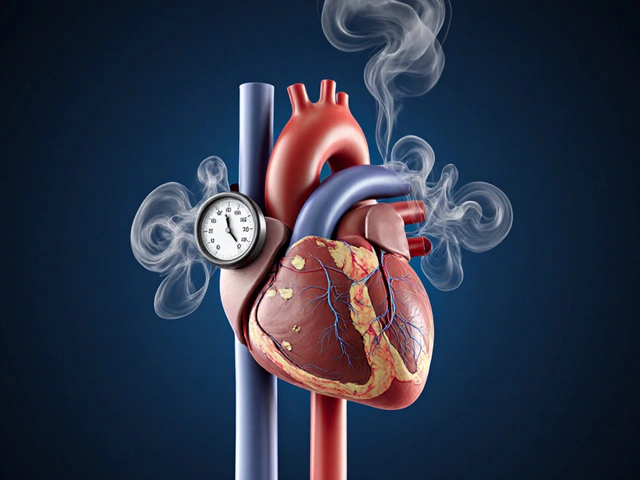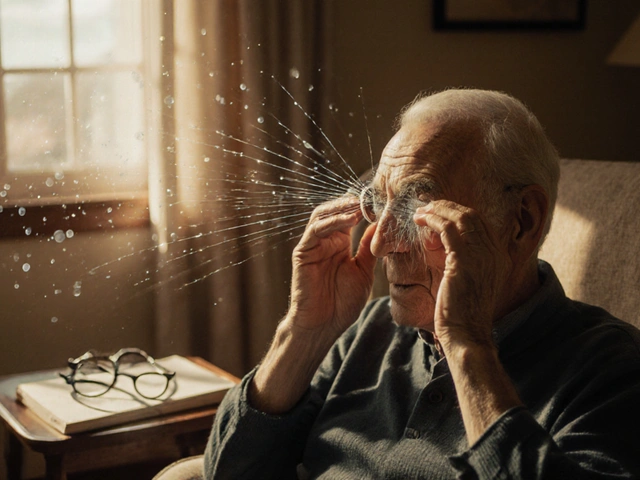What Is CKD-Mineral and Bone Disorder?
When your kidneys start to fail, they don’t just stop filtering waste-they also lose their ability to keep your bones and blood chemistry in balance. This isn’t just about weak bones. It’s a systemic problem called CKD-Mineral and Bone Disorder (CKD-MBD), a condition that affects nearly everyone with moderate to advanced kidney disease. It’s driven by three key players: calcium, parathyroid hormone (PTH), and vitamin D. When one goes off track, the others follow, creating a cycle that can lead to fractures, heart disease, and even death.
How Kidney Failure Disrupts Mineral Balance
Your kidneys are the control center for mineral balance. When kidney function drops below 60 mL/min (Stage 3 CKD), things start to unravel. First, phosphate builds up because the kidneys can’t flush it out. High phosphate levels trigger a cascade: your bones release calcium to compensate, your parathyroid glands go into overdrive, and your kidneys stop making active vitamin D.
That active form-calcitriol-is what your body needs to absorb calcium from food. Without it, your blood calcium drops. In response, your parathyroid glands swell and pump out more PTH. This sounds like a fix, but it’s not. Over time, your bones become porous, your arteries calcify, and your muscles weaken. By Stage 5, when dialysis is needed, over 90% of patients show signs of this disorder.
The Calcium-PTH-Vitamin D Triangle
These three elements don’t work in isolation. They’re locked in a feedback loop:
- Low calcium from poor absorption or bone loss → triggers high PTH
- High phosphate from kidney failure → suppresses active vitamin D production
- Low vitamin D → worsens calcium absorption → further increases PTH
It’s a spiral. And here’s the twist: even when PTH is sky-high, your bones may not respond. This is called skeletal resistance. Your body is screaming for calcium, but your bones won’t listen. That’s why high PTH doesn’t always mean strong bones-it often means weak, brittle ones.
What Happens to Your Bones?
CKD doesn’t just cause osteoporosis. It creates three distinct bone diseases, all dangerous:
- High turnover disease (osteitis fibrosa cystica): PTH levels above 500 pg/mL. Bones are constantly breaking down and rebuilding, but the new bone is weak. Fractures are common.
- Low turnover disease (adynamic bone disease): PTH levels below 150 pg/mL. Bone turnover is almost shut down. Bones look dense on scans but are brittle inside. This is now the most common form in dialysis patients.
- Mixed disease: A blend of both. Hard to treat because the treatment for one makes the other worse.
Studies show dialysis patients have a 4 to 5 times higher risk of hip fractures than people their age without kidney disease. And here’s the kicker: bone density scans (DEXA) often look normal in low-turnover disease, so you can’t rely on them.

Vascular Calcification: The Silent Killer
CKD-MBD isn’t just a bone disease. It’s a vascular disease. Calcium and phosphate don’t just leak into your bones-they deposit into your arteries. This is called vascular calcification. By the time you’re on dialysis, 75-90% of patients have it.
Calcium builds up in your coronary arteries, heart valves, and blood vessels. This stiffens your heart, raises your blood pressure, and increases your risk of heart attack and stroke. In fact, cardiovascular disease causes half of all deaths in CKD patients. Each 1 mg/dL rise in blood phosphate increases your risk of dying by 18%. That’s not a small number-it’s a warning.
How Is It Diagnosed?
Doctors don’t wait for fractures to happen. They monitor blood levels regularly:
- Calcium: Target 8.4-10.2 mg/dL
- Phosphate: Target 2.7-4.6 mg/dL (before dialysis), 3.5-5.5 mg/dL (on dialysis)
- PTH: Target 2-9 times the upper limit of normal (varies by lab)
- 25-hydroxyvitamin D: Minimum 30 ng/mL
Most clinics don’t do bone biopsies-they’re invasive and rare. Instead, they use PTH levels combined with bone-specific alkaline phosphatase (BSAP) and PINP to guess bone turnover. If PTH is low and BSAP is low, it’s likely adynamic bone disease. If both are high, it’s high turnover.
For vascular calcification, a simple chest X-ray can show signs, but a CT scan (Agatston score) is more accurate. If your coronary calcium score is above 400, you’re at high risk.
Treatment: It’s Not Just About Drugs
There’s no magic pill. Treatment is a three-pronged approach:
1. Phosphate Control
Diet is step one. Most patients need to limit phosphate to 800-1,000 mg per day. That means avoiding processed foods, colas, and fast food-they’re loaded with hidden phosphate additives. Even natural foods like dairy and meat have high phosphate, so portion control matters.
If diet isn’t enough, phosphate binders are used. These pills bind phosphate in your gut so it doesn’t get absorbed. But not all binders are equal:
- Calcium-based binders (calcium carbonate, acetate): Cheap and effective, but can raise calcium levels and worsen vascular calcification. Limit to 1,500 mg elemental calcium per day.
- Non-calcium binders (sevelamer, lanthanum): Better for arteries, but more expensive. Sevelamer also lowers LDL cholesterol.
- Aluminum-based binders: Avoid. They cause brain and bone toxicity.
2. Vitamin D Replacement
Most CKD patients are deficient in vitamin D-80-90% of them. But giving them the active form (calcitriol) can backfire. It raises calcium and phosphate, making calcification worse.
Current guidelines recommend starting with nutritional vitamin D (cholecalciferol or ergocalciferol). Doses of 1,000-4,000 IU per day can raise levels safely without triggering hypercalcemia. Studies show this reduces mortality by 15%.
Active vitamin D analogs (calcitriol, paricalcitol) are only used if PTH is very high (>500 pg/mL) and other treatments fail. Even then, doses are low and monitored closely.
3. Managing PTH
If PTH stays high despite diet and vitamin D, doctors turn to calcimimetics-drugs that trick the parathyroid gland into thinking calcium levels are higher than they are.
- Cinacalcet: Oral pill, taken daily. Lowers PTH by 30-50%. Side effects: nausea, low calcium.
- Etelcalcetide: Injectable, given 3 times a week after dialysis. More effective-lowers PTH by 45%. Now preferred for severe cases.
These drugs don’t raise calcium or phosphate. That’s why they’re safer than surgery or active vitamin D.

What’s New in 2025?
Research is shifting focus. Instead of just chasing numbers, doctors now treat the whole system. New drugs are being tested:
- Anti-sclerostin antibodies (like romosozumab): These boost bone formation. Early trials in CKD 3-4 patients show 30-40% increase in bone density. Not yet approved for CKD, but promising.
- Klotho protein therapy: Animal studies show injecting Klotho reduces vascular calcification by 50-60%. Human trials are starting.
Also, new KDIGO guidelines (2024 draft) recommend starting monitoring as early as Stage 3 CKD. That’s when FGF23-a hormone that regulates phosphate-starts rising, often years before phosphate does. Catching it early may prevent the whole cascade.
Why This Matters for Patients
If you have CKD, your bone and heart health are connected. You can’t fix one without the other. A low-phosphate diet isn’t just about kidney numbers-it’s about protecting your arteries. Taking vitamin D isn’t just for bones-it’s about survival.
And it’s not just adults. Children with CKD often stop growing properly. Their height can be 1.5 to 2 standard deviations below normal. Aggressive vitamin D and phosphate control can help them grow closer to their genetic potential.
There’s no cure for CKD-MBD. But with the right mix of diet, monitoring, and smart medication, you can slow it down. You can reduce fractures. You can lower your risk of heart attack. You can live longer-and better.
What You Can Do Today
- Ask your nephrologist for your latest calcium, phosphate, PTH, and vitamin D levels.
- Review your diet with a renal dietitian. Cut out processed foods, colas, and cheese sauces.
- Don’t skip your phosphate binders-even if you’re not hungry.
- Ask if you’re on nutritional vitamin D, not active analogs, unless your PTH is very high.
- Request a coronary calcium scan if you’re on dialysis or have heart symptoms.
CKD-MBD is complex. But you’re not powerless. Understanding these three elements-calcium, PTH, and vitamin D-is your first step toward taking control.
Is high PTH always bad in CKD?
Not always. High PTH is a sign your body is trying to correct low calcium or high phosphate. But if it stays too high for too long, it weakens bones and contributes to vascular calcification. The goal isn’t to crush PTH-it’s to keep it in the target range (2-9 times the upper normal limit). Too low can lead to adynamic bone disease, which is just as dangerous.
Can vitamin D supplements cure bone disease in CKD?
No. Nutritional vitamin D (cholecalciferol) helps correct deficiency and lowers mortality, but it doesn’t reverse bone damage. Active vitamin D analogs (like calcitriol) can help lower PTH, but they carry risks of raising calcium and phosphate, which can worsen artery calcification. They’re used only when other treatments fail and PTH is very high.
Why are phosphate binders so important?
Phosphate is the trigger. Every 1 mg/dL rise in blood phosphate increases your risk of death by 18%. Binders stop phosphate from being absorbed in your gut. Without them, even a healthy diet won’t be enough. They’re not optional-they’re life-saving.
Does dialysis fix mineral imbalances?
Dialysis removes some phosphate, but not enough. Most patients still need binders and diet control. Standard dialysis sessions remove only 30-50% of daily phosphate intake. Longer or more frequent sessions help, but they’re not always practical. The real fix is combining dialysis with diet and medication.
Can CKD-MBD be reversed?
Early-stage changes can be slowed or partially reversed with strict control of phosphate, calcium, and PTH. Bone density can improve with calcimimetics and vitamin D. Vascular calcification is harder to reverse, but stopping progression can extend life. Once severe damage occurs-like multiple fractures or hardened arteries-it’s usually permanent. That’s why early detection matters.
Are there foods I should avoid completely?
Yes. Avoid processed foods with phosphate additives-look for ingredients with “PHOS” in them: sodium phosphate, calcium phosphate, phosphoric acid. Also avoid colas, instant soups, processed meats, and most dairy products unless labeled low-phosphate. Even natural sources like chicken, fish, and beans have high phosphate, so portion control is key. A renal dietitian can help you build a safe meal plan.







Karandeep Singh
28 November 2025Dialysis removes phosphate? Lol. My cousin on dialysis still eats pizza every day and wonders why his calcium is through the roof. Binders are a joke if you don't change your diet.
Debbie Naquin
29 November 2025The calcium-PTH-vitamin D axis isn't a triangle it's a feedback loop with nonlinear dynamics. The real issue is FGF23 elevation preceding phosphate rise-this is the hidden driver most clinics ignore because they're still stuck in the 2000s paradigm.
Erin Nemo
29 November 2025I just started my first round of phosphate binders and honestly? I forgot them twice. Now I keep them next to my coffee maker. Game changer.
Kelly Essenpreis
29 November 2025Why are we even treating this? Kidneys fail because we eat too much processed crap. Blame the food industry not the patients
Suzanne Mollaneda Padin
1 December 2025I'm a renal dietitian and I see this every day. Patients think 'natural' means safe. Chicken and beans are phosphate bombs. A 4oz chicken breast has more phosphate than a can of soda. Portion control isn't optional.
Edward Hyde
2 December 2025They call it a disorder but really it's just the body screaming because we turned our digestive tract into a chemical factory. We're not patients-we're collateral damage.
Lauryn Smith
4 December 2025I had adynamic bone disease and didn't know it until I broke my wrist falling off the porch. DEXA was normal. My PTH was 80. I didn't even feel sick. This is why we need better screening.
elizabeth muzichuk
5 December 2025I can't believe people still use calcium-based binders. You're literally poisoning your arteries to save your bones. It's like putting duct tape on a leaking nuclear reactor. Someone should sue the FDA.
James Allen
6 December 2025I'm a veteran and I've seen this in VA hospitals. We're not even trying. They give you a pamphlet and say 'eat healthy'. Meanwhile, your bloodwork is a disaster. This isn't healthcare-it's negligence.
Amber-Lynn Quinata
7 December 2025I don't trust any of this. Big Pharma wants you on binders and calcimimetics so they can keep selling. Klotho protein? Sounds like a fairy tale. I'm going vegan and taking sunlight. That's the real cure.
Kenny Leow
9 December 2025As someone from Singapore who moved to the US for dialysis, I'm shocked how little education there is here. In my home country, we get weekly nutrition classes. Here? You get a sheet and a prayer. 🙏
Rachel Stanton
10 December 2025For anyone reading this: if your PTH is low and you're on dialysis, don't panic. Adynamic bone disease is silent but treatable. Ask for BSAP and PINP. Don't let them just look at PTH. You're not alone.
ariel nicholas
11 December 2025The real problem? They're not testing sclerostin levels. Why? Because the test costs $800 and insurance won't cover it. We're treating symptoms while ignoring the root cause. This is medical apartheid.
Margaret Stearns
13 December 2025I had a kidney transplant last year. My phosphate is normal now. I still take vitamin D3 2000iu daily. No binders. No calcimimetics. Just food, sunlight, and patience. It's not magic. It's biology.
Bonnie Youn
13 December 2025STOP SCROLLING AND START DOING. Your next fracture is waiting. Your next heart attack is waiting. Your next hospital visit is waiting. You have control. Use it. Today. Now. Go check your last lab results. I'm not kidding.
Charlotte Collins
14 December 2025They say 'vascular calcification is silent'. That's a lie. It's screaming. Every time your blood pressure spikes. Every time you feel chest tightness. Every time your legs ache walking up stairs. You just don't want to listen.
amit kuamr
15 December 2025In India we dont have binders. We use natural things. Buttermilk. Bitter gourd. Turmeric. No chemicals. Why are Americans so dependent on pills?
Scotia Corley
15 December 2025The current KDIGO guidelines are inadequate. They are reactive, not proactive. We must integrate FGF23 and klotho into routine panels by Stage 2 CKD. Failure to do so constitutes a systemic dereliction of duty.